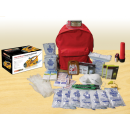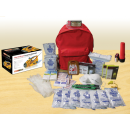More About Emergency Preparation
I know we’ve all probably had enough of all this talk about emergencies, preparation etc. but, I have a few more suggestions about this topic and then I’ll move on. I promise. Why keep harping on this? With the crazy weather all over the globe, we need to be prepared so that next time, when there…


